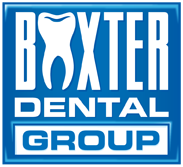Inlays and Onlays in Ballwin, MO
The most well-known procedures for tooth decay are the implementation of fillings and crowns. Typically made from amalgam (silver), fillings are used to fill the spaces between teeth where cavities have formed. Crowns, on the other hand, are placed when the decay is located deeper within the tooth’s structure or where a larger fracture needs to be covered.
However, there are situations where a filling is not enough and a crown is too much in protecting the tooth. When that occurs, dental professionals will utilize inlays and onlays. More substantial than fillings but less invasive than crowns, dental inlays and onlays are a great solution for many patients.
At Baxter Dental Group, Drs. Wehrmeister and G’Sell are experienced with treating various types of tooth decay, including inlays and onlays. We work tirelessly to ensure you are happy with your smile. That’s why we offer a variety of dental specializations suited to each patient that enters our office in Manchester, MO!
What is an Inlay?
Inlays are molded and fitted into the chewing surface of a molar when a cavity is present. Dental professionals choose to place inlays when a filling will not properly strengthen the surrounding tooth and the cavity requires stronger materials. When you visit our office for an inlay treatment, we will create an imprint of your affected areas then send the mold to a lab for manufacturing. While creating the impression, we will also do our best to match the color of your existing teeth.
At your second appointment, the inlay will be placed over the affected area. Since impressions were taken, the device will fit perfectly in the space between the cusps of your teeth. Common materials used to create inlays include porcelain and composite material, which are both stronger than traditional fillings. Gold is also an option, but its visibility and weakness are downsides. Although their durability makes inlays last longer, they are more expensive than amalgam fillings.
What is an Onlay?
Also called “partial crowns,” onlays are utilized when decay and damage cover both the chewing surface of a molar as well as the cusps. In this situation, your dentist will treat the cavity just as they would prior to a filling. They will inject a numbing aesthetic before drilling the cavity and cleaning the affected area. Following the initial steps, your dentist will take an impression that is sent to a lab, as well as place a temporary onlay.
Dental professionals recommend onlays when a cavity is too large to be filled traditionally with amalgam or when the tooth is likely to crack from its vulnerability. Also made of porcelain, gold, or composite material, onlays increase the tooth’s strength and protect the decayed area without covering the entire surface.
What’s the Difference Between an Inlay and Onlay?
Although inlays and onlays are created from the same materials and serve the same purpose, they cover different areas of the tooth. Inlays are placed within the gaps and hollows of teeth, often not covering the cusps. Onlays also fill the cavities in those spaces, but additionally cover the cusps. The usage of one over the other is determined by the extent of tooth decay.
Dental Inlays and Onlays vs Crowns
Dental inlays, onlays, and crowns all fulfill the same purpose of treating decay and protecting the teeth from further damage. However, inlays and onlays are much more conservative in their nature when compared to crowns, because they only cover portions of the tooth. Crowns, on the other hand, cover the tooth in its entirety and most likely will require reshaping in order to properly fit. In sum, your dentist will be able to recommend the proper treatment for your individual situation.
How Long Do Inlays and Onlays Last?
Inlays and onlays are known for their durability and long lifespan. When maintained properly through brushing and flossing, they can last up to 30 years. However, when not well cared for, inlays and onlays only last for as little as 5 years.
In addition to regular at-home care, it’s imperative that you visit the dentist every 6 months following your inlay or onlay placement. Your dentist will check the stability and health of the dental devices to ensure they are still protecting your teeth. They will last longer when you take care of them as well as your overall oral health.
Contact the Experienced Dentists of Baxter Dental Group
If you are experiencing the symptoms associated with tooth decay, such as discomfort, pain, and sensitivity, don’t hesitate to contact us at Baxter Dental Group. Our team of dental professionals will ensure you are comfortable and well cared for during your visit. Our goal is to make sure you leave our office with a smile of confidence! To schedule an appointment for dental inlays and onlays, either call us at (636) 227-9666 or complete our online form. We look forward to seeing you soon!

